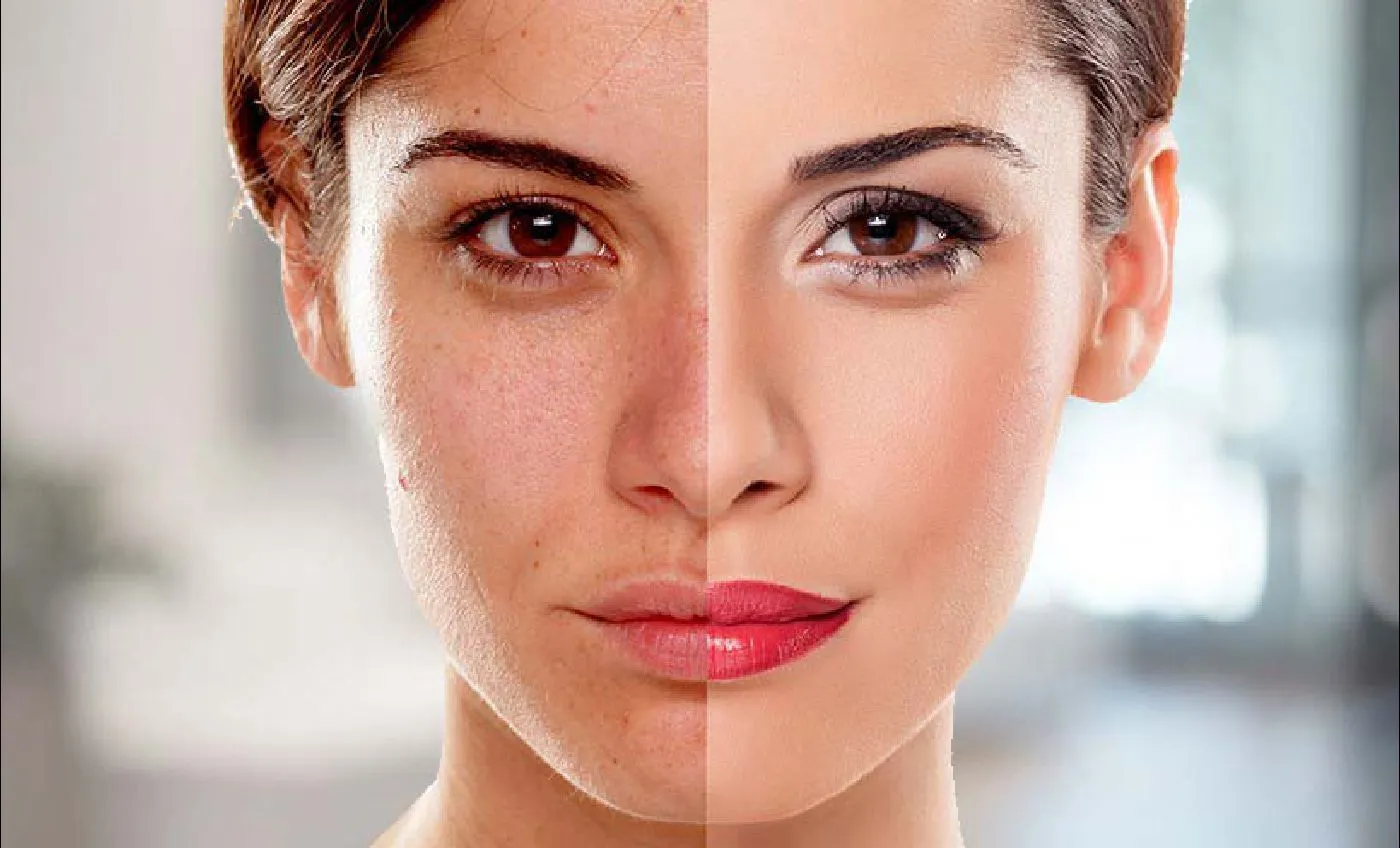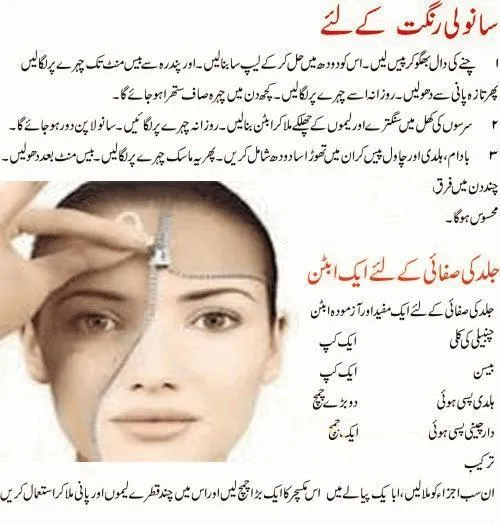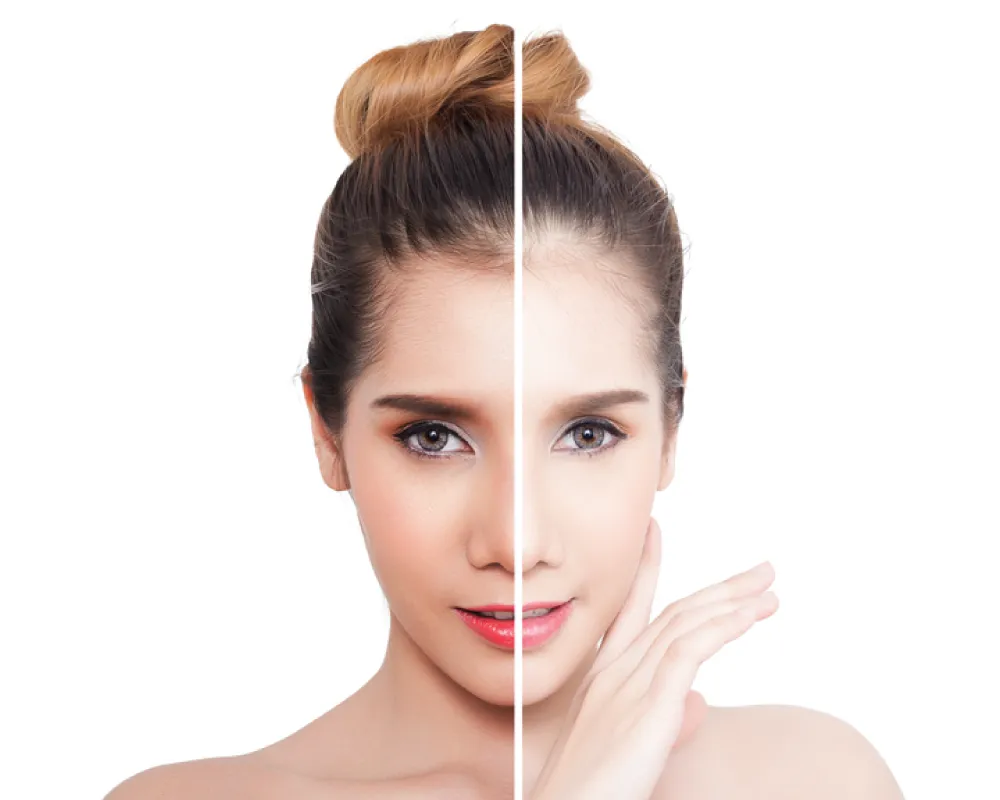Understanding Skin Whitening
Skin whitening, also known as skin lightening or skin brightening, is a process aimed at reducing the appearance of dark spots, uneven skin tone, and hyperpigmentation to achieve a lighter complexion. This can involve a variety of methods, from using skincare products to undergoing professional treatments. The goal is to diminish melanin, the pigment responsible for skin color, and to promote a more uniform and radiant appearance. It’s crucial to approach skin whitening with a comprehensive understanding of the underlying causes of skin discoloration and to prioritize skin health throughout the process. Effective skin whitening strategies often combine multiple approaches, addressing both the symptoms and the root causes of uneven pigmentation. This includes lifestyle adjustments, skincare routines, and sometimes, medical interventions. Before embarking on any skin whitening journey, it is recommended to consult with a dermatologist or skincare professional to determine the best approach for your skin type and concerns.
What Causes Skin Discoloration
Skin discoloration can result from several factors, including sun exposure, hormonal fluctuations, and skin injuries. Understanding these causes is key to choosing the right skin whitening strategies. Factors such as genetics and overall skin health play an important role in how our skin reacts to these triggers. Skin discoloration can affect anyone, regardless of their skin tone, and can range from mild to severe. It’s important to know the underlying cause to determine the most effective method.
Hyperpigmentation

Hyperpigmentation is a condition where patches of skin become darker than the surrounding areas. This can be caused by an overproduction of melanin, often triggered by sun exposure, inflammation, or hormonal changes. Common forms of hyperpigmentation include melasma, which appears as brown or gray-brown patches, and post-inflammatory hyperpigmentation (PIH), which occurs after skin injuries like acne or eczema. Treatment for hyperpigmentation often involves using skin-lightening agents, protecting the skin from the sun, and avoiding further inflammation. Products containing ingredients such as hydroquinone, retinoids, and vitamin C can be beneficial, but it’s best to consult a dermatologist before using them.
Sun Damage
Sun exposure is a major cause of skin discoloration. The sun’s ultraviolet (UV) rays stimulate melanin production, which can lead to uneven skin tone, age spots, and premature aging. Regular and prolonged sun exposure without adequate protection can cause significant damage to the skin, exacerbating existing pigmentation issues and creating new ones. Protecting your skin from the sun is a crucial step in preventing and treating skin discoloration, requiring the consistent use of broad-spectrum sunscreen, seeking shade during peak hours, and wearing protective clothing.
Hormonal Changes
Hormonal fluctuations, such as those experienced during pregnancy (melasma) or with the use of birth control pills, can also trigger skin discoloration. These hormonal changes can cause an overproduction of melanin, leading to dark patches on the face and other areas of the body. Managing hormonal imbalances, when possible, can help reduce the severity of this type of hyperpigmentation. In addition, skin care products that target melanin production can also be helpful in managing hormonal related skin changes.
Top 5 Skin Whitening Tips

Tip 1 Use Sunscreen Daily
The most crucial step in any skin whitening regimen is protecting your skin from the sun. UV rays can worsen existing pigmentation and prevent the effectiveness of skin-lightening treatments. Applying a broad-spectrum sunscreen with an SPF of 30 or higher every day, even on cloudy days, is essential. This will help prevent further damage and allow your skin to heal and brighten. Reapply sunscreen every two hours, especially if you are swimming or sweating. Using sunscreen consistently will also reduce your risk of developing skin cancer and premature aging.
Why Sunscreen is Essential
Sunscreen acts as a shield against the harmful effects of the sun, preventing further damage and allowing existing pigmentation to fade more effectively. Without sunscreen, any skin-lightening efforts will be less effective and may even worsen the condition. Sunscreen not only protects against sunburn but also helps to prevent the formation of new dark spots and premature aging. Incorporating sunscreen into your daily routine is a simple yet incredibly impactful way to maintain a healthy and even skin tone. The benefits extend beyond just cosmetic improvements, as regular sunscreen use significantly reduces the risk of skin cancer.
Choosing the Right Sunscreen

When choosing a sunscreen, opt for a broad-spectrum formula that protects against both UVA and UVB rays. Look for a sunscreen with an SPF of 30 or higher. Consider your skin type when selecting a sunscreen. If you have oily skin, choose a lightweight, oil-free formula. For sensitive skin, look for mineral sunscreens containing zinc oxide or titanium dioxide. Apply sunscreen liberally, about a shot glass full, and reapply every two hours, or more frequently if swimming or sweating. Using sunscreen daily is a fundamental aspect of achieving and maintaining a brighter, more even skin tone.
Tip 2 Exfoliate Regularly
Exfoliation removes dead skin cells, promoting cell turnover and revealing brighter, smoother skin. Regular exfoliation helps to fade dark spots and even out skin tone by removing the top layer of pigmented cells. However, it is important not to over-exfoliate, as this can damage the skin and cause irritation. The frequency of exfoliation depends on your skin type and the method you are using. Generally, exfoliating one to three times per week is sufficient. Always moisturize after exfoliating to keep your skin hydrated and protected.
Benefits of Exfoliation
Exfoliation offers several benefits for skin whitening. It removes dead skin cells, allowing skin-lightening products to penetrate more effectively. Exfoliation stimulates cell turnover, which helps to reduce the appearance of dark spots and uneven skin tone. Additionally, exfoliation can improve skin texture, making it feel smoother and look more radiant. Exfoliation can also unclog pores, preventing breakouts and promoting clearer skin. By incorporating exfoliation into your skincare routine, you can enhance the effectiveness of other skin-whitening treatments and achieve visible results.
Types of Exfoliants

There are two main types of exfoliants: physical and chemical. Physical exfoliants include scrubs, brushes, and cloths that physically remove dead skin cells. Chemical exfoliants use acids like AHAs (alpha hydroxy acids) and BHAs (beta hydroxy acids) to dissolve dead skin cells. AHAs, such as glycolic and lactic acid, are great for surface exfoliation and improving skin texture, while BHAs, like salicylic acid, penetrate pores to remove impurities. Choose the exfoliant that best suits your skin type and concerns. Start with a gentle exfoliant and gradually increase the frequency or strength as your skin adjusts. Always follow up with a moisturizer to keep your skin hydrated and protected.
Tip 3 Embrace Skin-Whitening Products
There are various skin-whitening products available, including creams, serums, and lotions. These products often contain ingredients that inhibit melanin production or promote cell turnover. When choosing skin-whitening products, it’s essential to select products that are safe and effective for your skin type. Look for products that are dermatologically tested and free from harmful ingredients. Always perform a patch test before using a new product to check for any adverse reactions. Consistency is key, and you should follow the instructions carefully to achieve the best results. Combine these products with other methods like sunscreen and exfoliation to maximize your results.
Ingredients to Look For
Effective skin-whitening products often contain ingredients such as vitamin C, niacinamide, kojic acid, and arbutin. Vitamin C is an antioxidant that brightens the skin and protects against free radical damage. Niacinamide helps to reduce hyperpigmentation and improve skin texture. Kojic acid inhibits melanin production, reducing dark spots and uneven skin tone. Arbutin is a natural skin-lightening agent that can help fade pigmentation. Always read the ingredient list and research the product to ensure it’s right for your skin type. It’s best to start with products with lower concentrations of active ingredients and gradually increase as needed.
Types of Products

Skin-whitening products come in various forms, each with its own benefits. Serums are often lightweight and contain high concentrations of active ingredients, making them effective for targeting specific concerns. Creams and lotions provide hydration and can be used to address uneven skin tone. Masks are great for intensive treatment, delivering a concentrated dose of skin-lightening ingredients. When choosing products, consider your skin type and the specific concerns you want to address. Always follow the instructions on the product label and combine products for a comprehensive skin-whitening regimen. Be patient, as it may take several weeks to see results, and consistently use products for optimal outcome.
Tip 4 Maintain a Healthy Diet
A healthy diet plays a crucial role in achieving and maintaining healthy skin. Eating a balanced diet rich in vitamins, minerals, and antioxidants can support skin health from the inside out. Foods that are rich in antioxidants can help protect your skin from damage and promote a brighter complexion. Hydration is also vital. Staying hydrated ensures your skin remains plump and healthy. It’s important to be consistent with your diet. Results may not be immediate, but a healthy diet helps in the long run. A well-balanced diet not only boosts skin health but also improves overall well-being.
Foods to Include
Include foods rich in antioxidants like berries, leafy greens, and citrus fruits. These foods help to combat free radicals and protect the skin from damage. Incorporate foods high in vitamin C, such as oranges and bell peppers, to promote collagen production and brighten the skin. Consume foods with omega-3 fatty acids, like salmon and flaxseeds, to maintain skin hydration and reduce inflammation. Drink plenty of water to keep your skin hydrated and help flush out toxins. Eating a balanced diet can make a visible difference in your skin’s health and appearance. It is all about balance and consistency, and your body will benefit greatly.
Foods to Avoid

Limit your intake of processed foods, sugary drinks, and excessive amounts of saturated fats. These foods can lead to inflammation and oxidative stress, which can negatively impact skin health. Reduce your consumption of refined carbohydrates, as they can cause blood sugar spikes that may contribute to skin problems. Excessive alcohol consumption can dehydrate your skin and lead to a dull complexion. Additionally, avoid excessive amounts of dairy, if you notice any flare-ups. Moderation and awareness of what you eat can greatly affect your skin’s brightness and health. Eating these foods occasionally won’t have a major impact, but regular consumption can cause issues.
Tip 5 Stay Hydrated
Hydration is fundamental for healthy and radiant skin. Drinking enough water helps maintain skin elasticity, prevents dryness, and promotes a healthy complexion. When your body is dehydrated, your skin can appear dull, dry, and prone to wrinkles. Staying hydrated supports the natural functions of your skin cells, promoting cell turnover and a brighter appearance. Aim to drink at least eight glasses of water a day. Make sure you are drinking water throughout the day, and your body will look and feel better. In addition to drinking water, you can also consume hydrating foods.
Benefits of Hydration
Hydration provides numerous benefits for skin health. It helps to flush out toxins, reducing inflammation and promoting clearer skin. It keeps your skin plump and supple, minimizing the appearance of wrinkles. Hydration supports the delivery of nutrients to skin cells, which enhances cell function and repair. Adequate hydration improves skin elasticity, making it less prone to damage. It also helps to regulate oil production, reducing the likelihood of breakouts. Staying hydrated can lead to a significant improvement in your skin’s overall appearance and health. By focusing on hydration, you can make a positive impact on the skin’s overall radiance.
How Much Water to Drink
The general recommendation is to drink at least eight glasses of water per day, but your individual needs may vary. Factors like your activity level, climate, and overall health can influence how much water you need. If you’re physically active or live in a hot climate, you may need to drink more water to compensate for fluid loss through sweat. Pay attention to your body’s cues. If you feel thirsty, drink water. You can also monitor your urine color; if it’s dark, you’re likely dehydrated. You can also consume hydrating foods, such as fruits and vegetables, to help you stay hydrated.
Conclusion
Achieving skin whitening requires a comprehensive approach that combines multiple strategies, including consistent sun protection, regular exfoliation, the use of skin-whitening products, a healthy diet, and adequate hydration. By implementing these tips and being patient, you can gradually improve your skin tone, reduce the appearance of dark spots, and achieve a brighter, more radiant complexion. Always consult with a dermatologist or skincare professional for personalized advice and to address any underlying skin conditions. Remember that consistency is key. You should maintain a skin care routine to enjoy long-term benefits. With the right approach and dedication, you can enhance your skin’s overall health and appearance, boosting confidence and achieving a more even skin tone. Consider this journey as a long-term investment in yourself, and take the time necessary to do it right.
